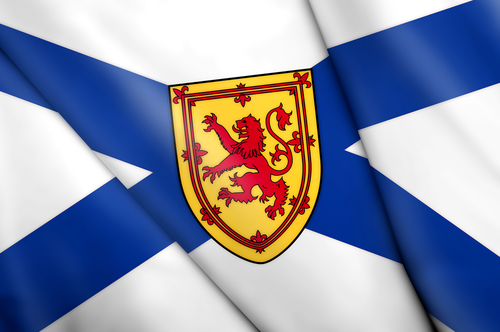Boosting Nova Scotia’s bioeconomy and innovating a new model for industry
Monday, February 5, 2024
Finding success in today’s emerging bioeconomy requires completely new ideas, processes and products. As the world moves towards a more biobased economy, people and companies need to find new ways to use renewable resources to produce industrial goods and energy.
By nature, Nova Scotia’s growing bioeconomy encompasses a range of businesses already using our natural resources to generate economic benefit. This includes traditional industries such as forestry, fisheries, agriculture and mining, as well as emerging work in energy storage, renewable energy, clean technologies, value-added bioproducts, and innovative aquaculture.
Suzanne Fraser, with Invest Nova Scotia, works with cleantech companies to help them expand to Nova Scotia. “The bioeconomy is exploding, and Nova Scotia has the winning conditions companies need. Whether it’s the research collaboration, the feedstock providers, or the existing infrastructure, talent and teams, the province is primed for scaling this growing industry.”
The right raw materials — bioresources and feedstocks
In a nutshell, the bioeconomy creates prosperity from a different resource base. This involves the harvesting of raw materials including wood fibre, food crops and seafood. Most of the material makes its way directly to consumers, but a range of raw materials that are typically discarded arrive at biorefineries to be used as feedstocks.
In Nova Scotia you can gain direct access to a variety of feedstocks including:
- Woodchips and sawdust from sawmill operations
- Lobster shells and groundfish skins from seafood processors
- Purpose-grown algae strains
- Municipal solid waste
- Organic sludge from manufacturing or municipal wastewater treatment
Innovative people and processes – biorefineries
Refineries have multiple processes, platforms, and products to turn the feedstock into an innovative product. Even when using the same feedstock, biorefineries can vary in processes and outputs.
Unlike other industries, the bioeconomy needs capital-intensive infrastructure to scale. Located in Cape Breton, Nova Scotia, the Verschuren Centre provides access to a shared infrastructure that is unique and novel within North America.
Beth Mason, President and CEO of the Verschuren Centre, explains. “If you're making a new green chemical or graphene, you need investment in big equipment. You can't just do that from your basement. And that’s the stage when the Verschuren Centre picks up companies. We try and build either collectively with the company a shared asset, or we build — in the case of biomanufacturing — the asset that can be used by multiple companies. That's the de-risking role of the Verschuren Centre.”
“Our 10,000-litre reactor line completes the journey to scale for a lot of our biomanufacturing companies. It’s a one of a kind in Canada and that attracts international clients and keeps our pipeline of clients moving to full scale while they build their plant, hopefully in Canada.”
The bio manufacturing team at the Verschuren Centre uses a pilot-scale fermentation and downstream processing facility, operating a rare bioprocess production model that combines upstream and downstream operations.
The Verschuren Centre works here at home and with companies around the world to find innovative solutions to support the bioeconomy and recently partnered with the seafood and plastics industry to create sustainable packaging using lobster shells.
Diverse and sustainable — commercial bioproducts
The commercial results of Nova Scotia’s bioproducts are grouped as bioenergy, biomaterials, and biochemicals. The products are sustainable, low-carbon alternatives to products derived from carbon-intensive, non-renewable resources such as petroleum and coal.
Dispersa is a client at the Verschuren Centre making biosurfactants from food waste to replace the $45-billion petroleum-derived market. They began scaling their automized process at the Verschuren Centre this past summer. They have exceeded expectations and already moved from a three-to-five litre reactor up to their first 100-litre reactor run, which was completed in January 2023. This provides Dispersa with enough sample product to secure additional large commercial partners and exemplifies the speed start-ups can achieve at the Verschuren Centre.
Many bioproducts are compostable or can be collected at the end of their lifecycle to be reprocessed and reused in the bioeconomy’s circular chain, further reducing their environmental impact.
These are just some of the products created from Nova Scotia’s feedstocks:
- Precursor chemicals for bioplastics and biopolymers
- Biofuels (woody biomass-based biodiesels and drop-in renewable diesels)
- Biochar, biographene, and biocarbon black
- Torrefied (black) pellets
- Chitin and chitosan
- Lignin
- Furfural
- Cellulosic nanomaterials
- Biocomposites
- Other biochemicals used in applications such as food and cosmetic ingredients, agriculture, cleaning products, pharmaceuticals and natural health products.
Feeding a growing demand for sustainable alternatives — the bioeconomy
As businesses around the world move toward cleaner alternatives, the demand for bioproducts is increasing. Nova Scotia is adopting new methods to support this industry with job creation, investing in research and making room for innovative approaches to the bioeconomy.
Nova Scotia’s natural advantages and long history of sustainable initiatives are delivering opportunities for local and international companies throughout the supply chain.
As one of Canada’s leading regions for renewable natural resource innovation, Nova Scotia has the right mix of service providers, facilities, skilled talent, industrial sites and co-location opportunities to not just grow the province’s bioeconomy but to innovate this burgeoning industry.
If you’re in the bioeconomy business and are curious how your growth plans could work in Nova Scotia, contact Suzanne Fraser to learn more and schedule a curated site visit.





